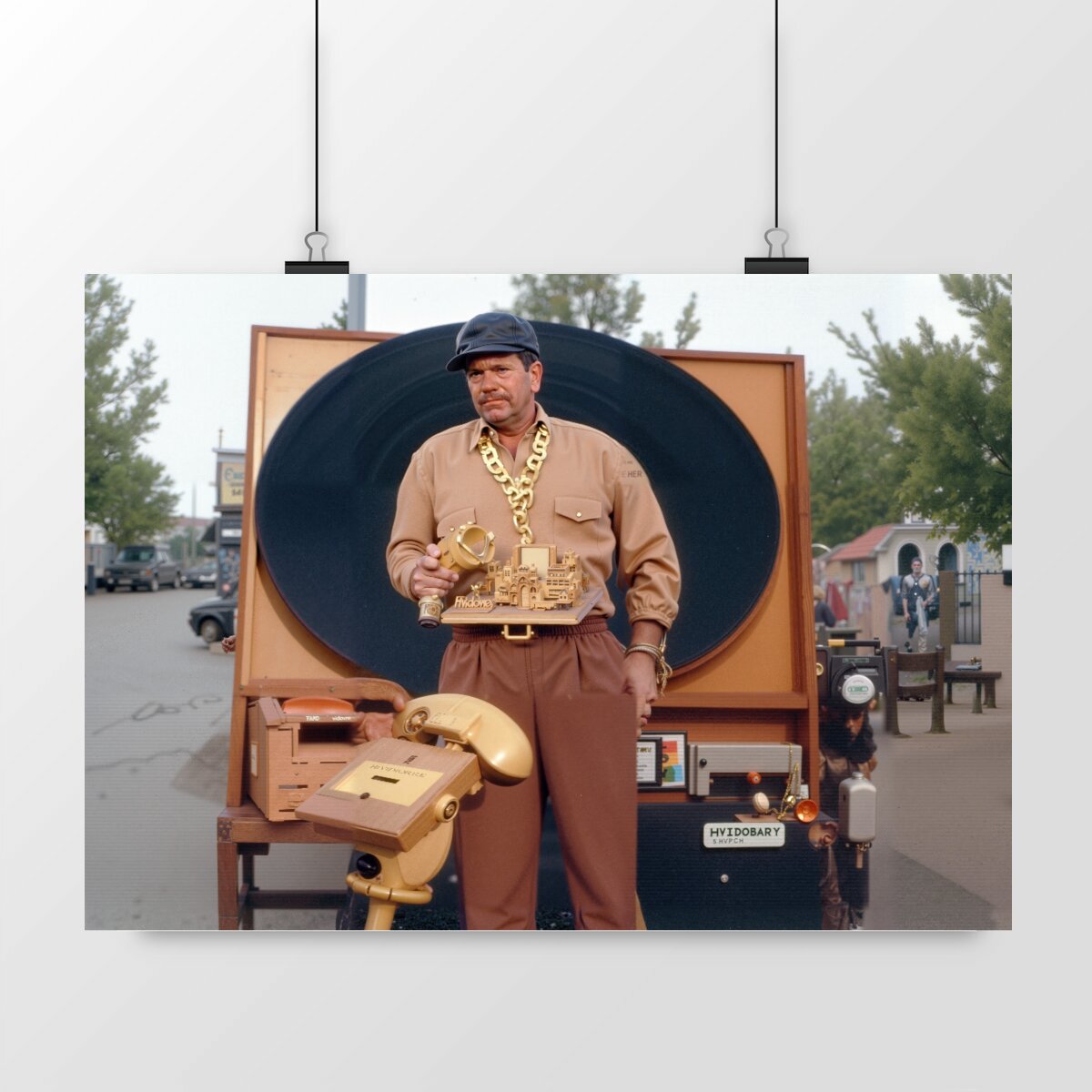

Figur 8 (Hvidovre gør gode tider bedre)
50.00 €
Museum-quality Luster or Matte paper Giclée printing quality, 12 colors Paper weight: 250 g/m2 FSC Label
Figure 8: Bøje Nielsen and Hvidobery
In 1973, entrepreneur and developer Bøje Nielsen began investing his growing fortune into realising Hvidobery, a musical reinterpretation of Hvidovre. Alongside his traditional building projects—such as total enterprises and Denmark's longest office building at Avedøre Holme—he spent hundreds of millions constructing buildings that captured and transformed the suburb’s sounds. The foundations were fitted with contact microphones to capture the suburb's pulse, while the roof structures functioned as giant instruments, converting wind movements into music.
In his open laboratory at Center Syd, Nielsen invested significant portions of his personal fortune—estimated at over 600 million kroner in 1979—into developing systems that channelled rainwater through transparent pipes in buildings. These pipes fragmented the rhythm of the water into new patterns. The entrepreneurial efficiency for which he was renowned in his large construction projects was now directed towards capturing and transforming the suburb’s natural rhythms. Birdsongs were amplified through specially designed acoustic structures, while even the noise of traffic was transformed into melodies via expensive resonance chambers.
The visionary developer’s dream of a city producing its own ever-changing composition drove him to channel millions through his companies, including Danske Fabrikshaller and Dansk Totalentreprise, to develop these musical buildings. Each new structure was designed as an instrument in the suburb’s orchestra, harmonising with the sounds of its surroundings.
